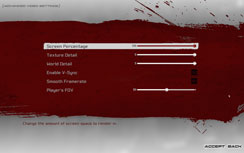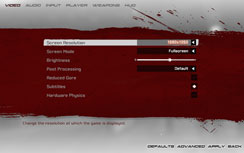Unreal Tournament 3
Publisher: MidwayUnreal Tournament 3 is the latest addition to the Unreal franchise and it is a clear attempt to replace the previously separate games. Unreal used to be very focused on singleplayer elements, while Unreal Tournament's focus was on the multiplayer side of things.
The game is based on Epic's heavily licensed Unreal Engine 3 technology, which is used by many games that were released last year or are due for release over the next couple of years. The current version of Unreal Tournament 3 only supports DirectX 9.0 but Mark Rein, vice president of Epic Games, said that DirectX 10 support in UT3 is forthcoming.
The engine uses a Deferred Rendering technique, which basically prevents the game from supporting anti-aliasing techniques in a traditional sense because there are multiple surfaces stored in the MRTs. In fact, Epic decided that there wasn't even a need to include application-controlled anisotropic filtering - instead, we had to force anisotropic filtering from the driver control panel.
Because of the variability in this title, being a multiplayer game, we played five three minute bot matches against 23 bots on the vCTF-Sandstorm map, recording the average frame rate over this period. We then removed the highest and lowest results to remove outliers and the average of the remaining three is the frame rate we are displaying here -- this represents around nine minutes of typical gameplay.
Again, the Zotac GeForce 8800 GT 512MB AMP! Edition sits up there with the standard GeForce 8800 GTS 512MB—and even the 8800 GTX in some scenarios—but it's not got enough horsepower to catch up with the similarly-priced BFGTech GeForce 8800 GTS 512MB OC right across the board. That said, at least at 2560x1600, you'll not be able to tell the difference between Zotac's GeForce 8800 GT AMP! Edition and the moderately-overclocked BFGTech 8800 GTS 512MB OC.

MSI MPG Velox 100R Chassis Review
October 14 2021 | 15:04











Want to comment? Please log in.